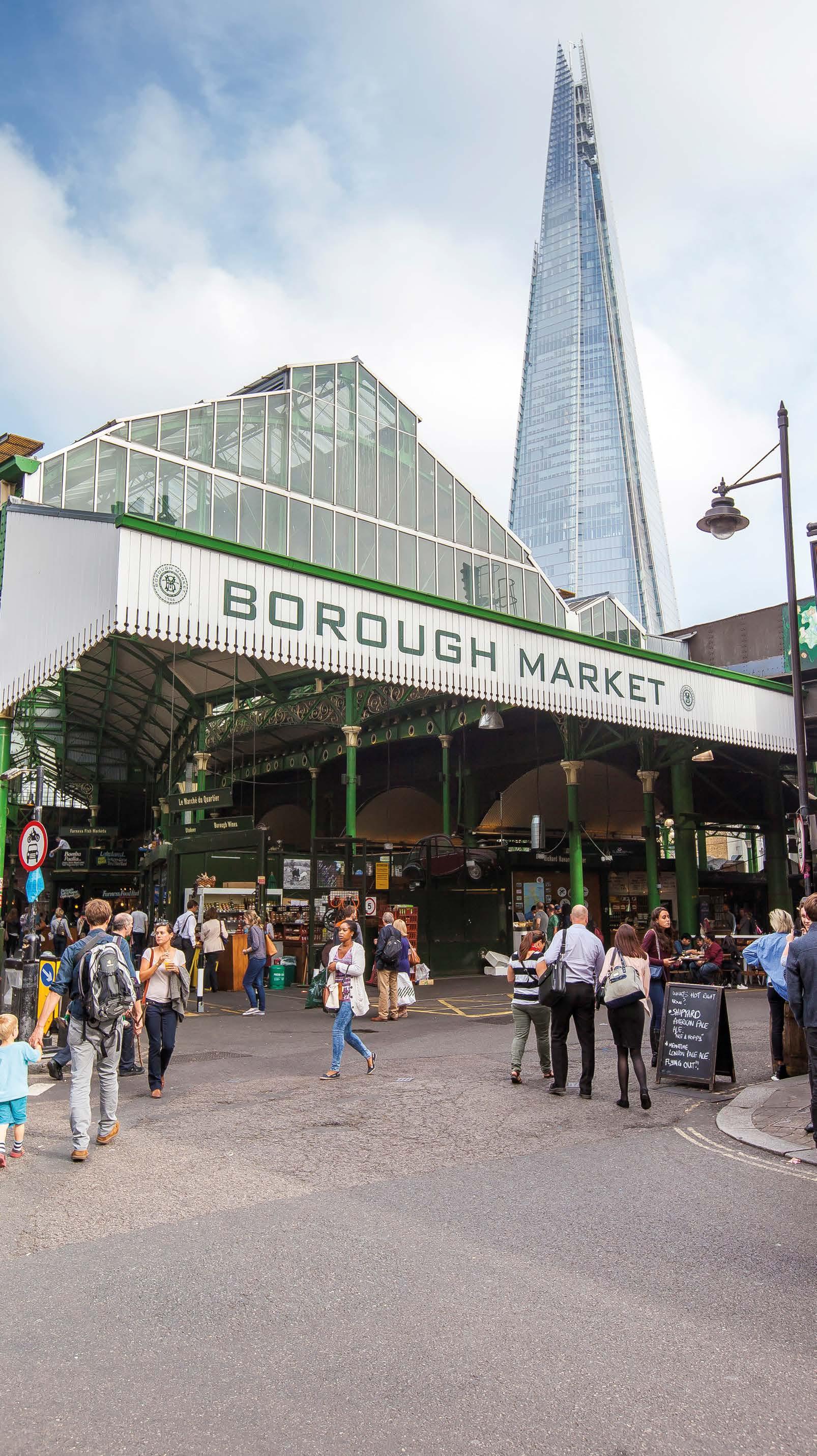
5 minute read
Remembering When
Street Markets in Southwark were organised and became a vital part of the local retail economy
By Ken Hayes - Honorary Membership Secretary
The City of London set up and managed and controlled the wholesale markets for food, Smithfield for Meat, Covent Garden for Flowers, Fruit and Vegetables and Billingsgate for Fish.
Shopkeepers and street traders would purchase their supplies from these wholesale markets. They would then sell them on to the public from their shops or barrows.
In I880 street trading became organised and licensed by the London County Council and were moved off the main roads into side streets to avoid traffic congestion.
The pitches were allotted on a daily basis and at 8.00am on Market days a police constable would blow a whistle and the traders would rush to get the best pitches which often led to fighting.
In 1927 market control was passed to the Metropolitan Borough councils and market traders were granted licences and given their pitches by market staff.
Not all of the markets in Southwark have survived until today. Gone are the Cut Market, off Blackfriars Road, Tower Bridge Road Market and Westmoreland Road Market. East Street Market in Walworth and the Borough Market are still operating.
All the markets suffered badly in the aftermath of WWII and took time to recover from both the bomb damage and the loss of life due to the war. The oldest Southwark market is the Borough Market, which has existed for over 1,000 years. It was originally a wholesale market controlled by the City of London corporation, but was turned into a Charitable Trust under a 1754 Act of Parliament. It is now a retail specialist food market.
A new Street Market has opened in Maltby Street off Tower Bridge Road win recent years.
Street Markets have suffered during the current Covid -19 pandemic and will hopefully bounce back to life.


Adapting to the new normal to support your Companies best asset
So, homeworking is here to stay!

Overall, this is a very good thing. However, we’ve been doing this for a year and a majority of people at all levels of the organisational structure are precariously negotiating the ‘Agile-Working’ path. For homeworking to be a viable and sustainable working practice, there will need to be an adjustment in the mindset of business owners, management and employees to ensure this is a positive move.
Simon Garcia
owner of
Freedom Wellbeing Inc
With en masse homeworking being imposed on us all, organisations whether proactively encouraging agile-working or very much running away from it, were pretty much left to “like it, or lump it” as my mum would say, if young me had any doubts about the dinner she’d put in front of me.
Thankfully, in the most part, there has not been much of an argument against how well it’s worked overall from a business perspective. To ensure that it remains a positive development, there needs to be a progressive approach to workplace wellbeing from both employers and employees, with equal focus given to mental wellbeing and physical health. Freedom Wellbeing Inc have completed over a thousand homeworking assessments since the beginning of the first lockdown in March last year. What we found was that over the first six months, the emphasis of discomfort was pretty much all on the physical side. The lions share of those assessed had some experience of homeworking prepandemic, maybe a day or so a week. For that percentage of the working week, a dining table & chair, though not really suitable and definitely not ideal, was sufficient as an isolated workstation. When suddenly using it for five days straight, the musculoskeletal disorders began to rise. For the following six months, the pendulum swung back toward mental health. The novelty factor of rolling out of bed 10 minutes before you start work had now began to wane, the psycho-social impact of no physical interaction with colleagues, or staring at the same four walls, plus the added stress of increased restrictions, home-schooling and winter weather all piled pressure on our mental states. Anyone that has experienced stress will know that it also impacts us physically. Think back to a stressful day at work you may have had. Without realising it, you’re hunched over, your shoulders are pulled in tight, your jaw is locked. This is thousands of years of instinct kicking in, putting you into fight or flight mode, whenever you are distressed. Useless if you’re sitting at a desk! Moving forward with the new ways of working, there will be a good mix of office and home, but with this there needs to be a stronger understanding of mental health in the workplace and an acceptance that additional support will be needed for homeworkers, as physical disorders will increase. Hopefully, you will find it a smooth transition into new business practices, but don’t worry if you’re not sure where to start. Here are five steps for employers to adopt to help ensure everyone stays physically healthy, mentally strong and at their most productive.
• Workplace Assessments, whether for home or office, are an essential element of any organisations wellbeing programme. These ensure your staff have everything they need to perform their role as safely as possible and remaining as productive as possible.
• If you have any form of EAP (Employee Assist
Programme), usually through your Occupational Health provider, promote it constantly. If you do not have EAP, look into ad-hoc stress & anxiety counselling.
• With mental health awareness growing in
workplace, it stands to reason that training managers in Mental Health First Aid will be a benefit. This will help to recognise warning signs within their teams, so that help can be provided as early as possible.
• A lot of companies do annual wellbeing surveys.
Under the current circumstances, consider sending out the survey quarterly to gauge how people are coping with the new ways of working. This will be incredibly beneficial for forward planning, whether that’s for budgets, recruiting, or training.
• Initiate shorter video meetings. Video technology has been an overwhelming plus to keeping business connected & moving. However, back-to-back meetings are one of the key contributing factors to musculoskeletal disorders through the lockdown. This is easily remedied, but it has to come from the top, down. If you book 60min meetings as standard, make it mandatory that they are 50mins. That 10mins between meetings are vital for movement, increasing circulation and activating muscles impacted by sedentary periods. This will help prevent musculoskeletal disorders that could lead to expenditure through ergonomic equipment.










